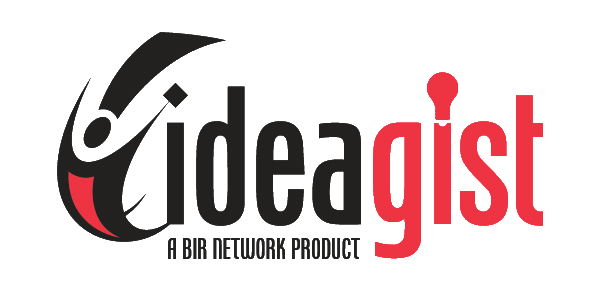I have a great startup idea but no money.

………By: Hassan Sayed
Ever since we launched IdeaGist, our team has participated in many variations of the same conversation with countless people who have a terrific idea for a startup. Everyone seems adept at coming up with ideas for a dynamic business, a clever product, an ingenious service. But the majority of these ambitious innovators whose creative acumen and enthusiasm for their idea’s potential seem to share one common roadblock to certain success. Money.
They don’t seem to have any. A large number of us don’t even know people who have money, at least not enough of it to invest in our ideas.
Are you a member of this community of entrepreneurial visionaries with great ideas and no money? If so, this blog is for you.
We are not here to talk about ways to raise money for your startup, there are plenty of blogs out there covering that topic. Instead, let’s talk about developing your startup within your means.
The ultimate proof of an idea’s validity is when more than a few people are willing to pay for it. You need to get to this point with what you can afford. While IdeaGist offers a more extensive process for people like you, here are a few simple steps you can take to get there with little or no money:
- Define the problem: Write down your thoughts. Begin with a clear statement about whatever problem you’re trying to solve with your idea. If you don’t have a clear idea of what the problem you need to solve is, think about why you came up with your idea in the first place. Within your own brain is the key to solving this puzzle. If your answer to the question about why you came up with the idea in the first place is because you thought it could make a lot of money, think harder. Without defining the problem your idea can solve, you’re wasting your energy and avoiding the real issue. You don’t need any money for this step.
- Validate the problem: Innovative people often have vivid imaginations, so it’s easy to fall into their own traps. You need to validate your problem statement. If you have performed step one correctly, this part should be easy. Talk to people with a similar problem they’re trying to solve and ask them how they’re planning to do it.Don’t offer your solution, just listen to them. Try to understand the toll this problem is taking on them, and try to assess how much value they would place on a solution. Write down their stories—your goal is to talk to 10 people with the same or similar problems. Chances are you know these people so there should be a level of trust. If you don’t know the people with whom you’re discussing the problem, try to find someone in your circle who does know them. This step should not cost you any money.
- Sketch it out: You have a distinctive creative viewpoint, so it may not be easy for people to understand your idea. You may be thinking about a device—maybe an app, a website, something totally unique. Draw whatever you’re imagining on a piece of paper. If you’d like to use computer graphics tools for this step, go for it. It does not matter how it looks, just create a sketch of your idea. If your idea is an app, just draw screens with boxes and labels. You don’t need to be an artist for this. This step should not cost you any money.
- Paint the picture: You may already have done a good job sketching your idea and may not need this step, or you may not want to share your sketch with others. Your goal is to develop a visual expression of your idea as you envision it in the future. The picture you develop could be expressed in the form of a story or narrative, an animation, a collage—something that can be shared with potential users or customers. This step may cost you a little money, but you should avoid spending a lot of money on it.
- Reality check: Remember the 10 people you talked to earlier? Call them again. Tell them that you can solve their problem. Would they be interested? If they say yes, give them a price point. Don’t be shy, ask them if they would pay “X” amount to solve their problem. If they say no, find out how much they would be willing to pay. Share your picture with them, if you need to. This step should not cost you any money.
- Cost benefit: Consider the cost of developing your idea. You don’t need to be accurate, just approximate. If you have not developed similar projects in the past, talk to few people who have and ask them about their average costs. Divide the estimated development cost by the average price your customers are willing to pay. This will give you a target customer base to pay for your solution’s development. This step should not cost you any money.
- Bootstrap or crowdfund: With the knowledge you’ve gained of your customers, your solution, and cost benefits, ask your potential customers if they’d be willing to pay in advance with a promise to deliver their solution within a specific time period. If your product is something like a device, you may be able to run a crowdfunding campaign. At this stage you may need to spend some money to develop your story and present your idea.
Once you have completed these 7 steps, chances are you will be able to bootstrap your startup, or at least show ample proof that it will be easy for you to raise money. You may even ask a few potential customers if they would like to invest in your solution and claim a stake in your company.
IdeaGist’s proprietary formula for startups contains 60 steps to guide you through the maze of startup-building, and offers templates and learning materials at every step. We do all this to achieve two simple goals:
• Help entrepreneurs get the most work done with less cash needed
• Help entrepreneurs avoid common mistakes that could become fatal
Join IdeaGist and get working on your startup like a pro.
###

